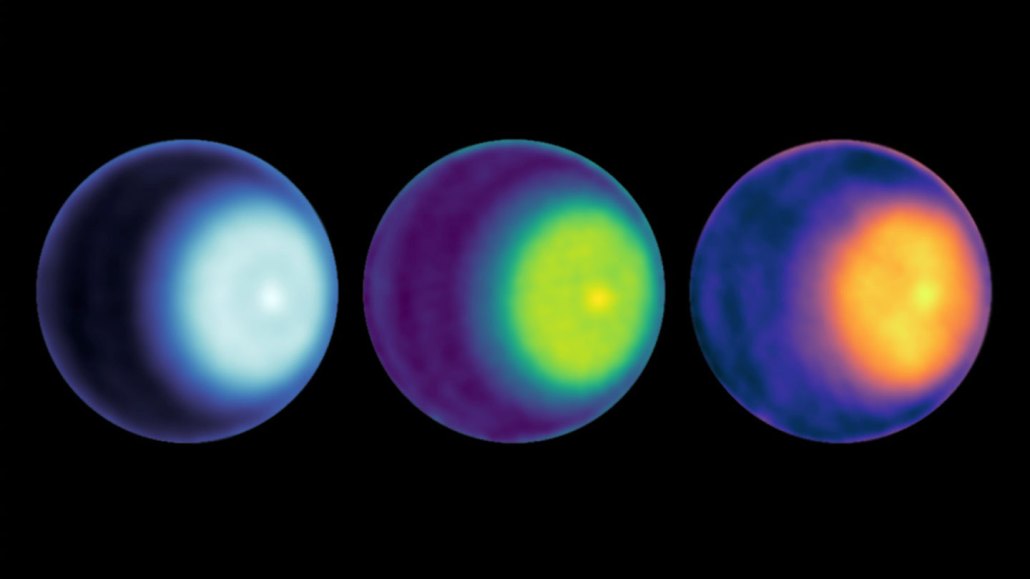
A cyclone at the north pole of Uranus appears as a bright spot in these false-color images of the planet taken at three different wavelengths of radio waves.
JPL-Caltech/NASA, VLA

A cyclone at the north pole of Uranus appears as a bright spot in these false-color images of the planet taken at three different wavelengths of radio waves.
JPL-Caltech/NASA, VLA